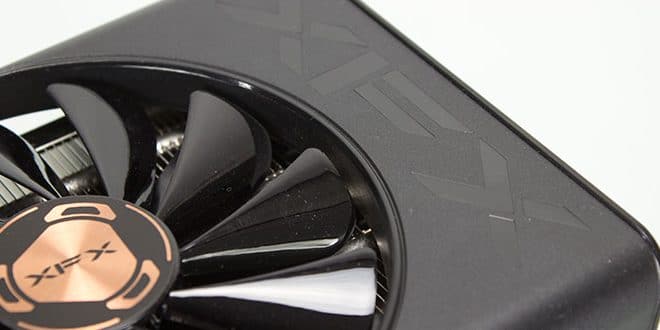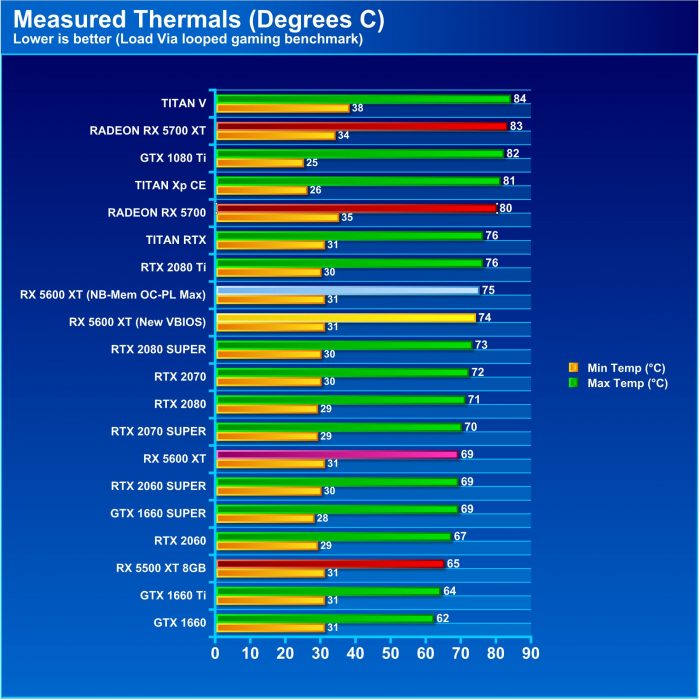Power, Thermals, and Noise

For power testing, we use an outlet power meter, which I know is not perfect but it’s repeatable and accurate enough to show the disparity between changes in the platform. All parts remained the same between tests with only the GPU changing. Just keep in mind this is the full system load power consumption while looping the Heaven benchmark.
Legend:
RX 5600 XT = Stock out of box (No Flash)
RX 5600 XT (New VBIOS) = New VBios at default
RX 5600 XT (NB-Mem OC-PL Max) = New VBios with mem at 14,880 and power target slider +20
Here you can see that total system power consumption jumps from a repeatable 189W (peak) with the out of the box VBios to a repeatable 223W (peak) with the new VBios loaded under a heaven benchmark loop. This is a 34W increase, now there is room for margin of error on both sides, but that is a far cry from the 10W increase most stated or even the 20W that XFX said their VBios should increase. With that said, let’s move forward.

For our thermal testing, we ran Gaming loads rather than a power virus type of load, as this represents a far more realistic loading scenario for those looking to see what you can expect when gaming on your new RTX card.
The 5600 XT with the original VBios would top out at 69C with its dual axial cooler fro the Thicc II Pro. With the VBios flash, we see the thermals jump to 74 and 75 steady-state under the same heaven benchmark loop. This is expected with such a significant clock speed jump.

The fan noise, much to my surprise when at 75-75C was still rather silent with maybe a slightly audible hum to the fans when placing my ear within 12″ of the card on my open-air testbench.
 Bjorn3D.com Bjorn3d.com – Satisfying Your Daily Tech Cravings Since 1996
Bjorn3D.com Bjorn3d.com – Satisfying Your Daily Tech Cravings Since 1996










